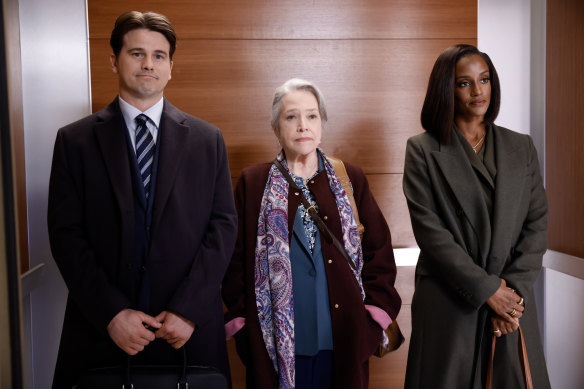Edgier and updated, the case of the procedural show is back
What’s old is new again.
The procedural is the format television was built on. Since the earliest days of the medium, professionals have been solving mysteries week in, week out: detectives play sleuth and uncover a killer, doctors diagnose a patient’s inexplicable ailment, lawyers clear a case. Across an hour – 42 minutes of story, 18 minutes of advertisements – the procedural told a self-contained story. Every week was a variation on the same structure. You could miss an instalment and it didn’t matter because the protagonists always followed the same path.
For the past 25 years, the American procedural has been on the backburner. The new drama emphasised a season-long arc, each episode progressing the plot through multiple strands and building to a finale. You couldn’t miss an instalment. From The Sopranos and The Wire on, the rewards were great, but while those show commanded attention and wards, the procedural kept plugging away on American broadcast television, spawning franchises: CSI: Crime Scene Investigation and its spin-offs, NCIS and its spin-offs, FBI and its spin-offs. Predictability was essential to their reassuring pleasure.

Jason Ritte (left), Kathy Bates and Skye P. Marshall in Matlock: gender-flipped and updated.Credit: CBS
Over the past few years, however, the procedural has started to undergo a resurgence. The format’s new series are less corrosively conformist, riskier in their structure, and willing – sometimes – to embrace the unexpected, or at least allow for self-deprecation. Most of the episodes are still 42 minutes long, but the professionalism of these productions come with an artisanal glee or even a disruptive edge. Perhaps what’s bold is new again.
The canniest newcomer is Ten and Paramount+’s Matlock, which was promoted as a reboot of the legal procedural about a crusty but clever lawyer, Ben Matlock (Andy Griffith), that ran from 1986 and 1995 and lived on as a running gag on The Simpsons. Gender-flipped and updated, it introduces the equally folksy but astute Madeline Matlock (Kathy Bates), a grandmother who jokes about her TV namesake even as she secures an associate’s position at a high-powered New York law firm. Her new 20-something colleagues are gobsmacked.
Without spoiling it, the first episode of Matlock has a fantastic twist that subverts your expectations for the show and reinvents it as two connected strands: a client of the week procedural where Madeline’s experience and empathy win through, and a darker thriller that paints her in a new light. Putting some underlying impetus on a procedural is the synthesis showrunners favour now. Binge’s Found, about a team searching for missing people ignored by the police, ended its debut with an equally audacious pivot. Now in its second season, the series deserves more than its current low profile.

Justin Hartley plays the stoic but sensitive Colter Shaw in Tracker.Credit: Disney+
Missing people are also the focus of Disney+’s Tracker, which is the most mainstream of the new procedural wave. This Is Us star Justin Hartley plays Colter Shaw, an off-the-grid survivalist who travels America in his pick-up and gleaming caravan earning rewards posted for the disappeared. The stoic but sensitive Colter – his lingering uncertainty is whether his disciplinarian father was murdered – carries a gun and spots things the regular police miss; he’s Simon Baker from The Mentalist in camo pants. This show takes itself quite seriously.
Hartley’s Colter Shaw – sorry, any excuse to mention that rugged name – is a traditional leading man part, but one of the welcome tweaks in the genre is how the protagonists are more diverse. The best example is the delightful Elsbeth, the Paramount+ detective procedural about Chicago lawyer Elsbeth Tascioni (Carrie Preston), assigned to oversee a New York Police Department unit. Elsbeth, a character originally introduced on The Good Wife, has such helpful insights, however, that she’s soon consulting on cases.
From the title credits to Elsbeth’s wardrobe, pink is the primary colour in the show’s palette. With her head constantly entering the frame at odd angles, this detective is both smart and daffy. Like her spiritual forebear, Peter Falk’s rumpled Los Angeles homicide detective Columbo, she’s underestimated by her adversaries. Both Elsbeth and Columbo are howcatchems. You see the murderer at work in the opening scene, with the rest of the episode showing how the detective figures out they’re guilty and finds the evidence to prove it.
If Elsbeth is idiosyncratic, Disney+’s Doctor Odyssey is plain bonkers. Set on a cruise shop – The Love Boat vibes are real – this medical drama is about a dedicated doctor, Max Bankman (Joshua Jackson), looking to save lives and also finally enjoy some romance. Co-created by horror and true crime impresario Ryan Murphy, it’s a mix of high-seas flirtation, medical crises and wild mishaps – the debut episode’s crucial operation was on a fractured penis. An episode of this show is my palate cleanser after concluding a particularly serious series. It goes to extremes, but like the other shows here, it only wants 42 minutes of your time.
Find out the next TV, streaming series and movies to add to your must-sees. Get The Watchlist delivered every Thursday.